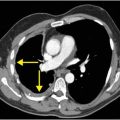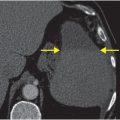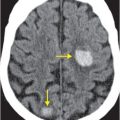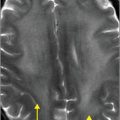
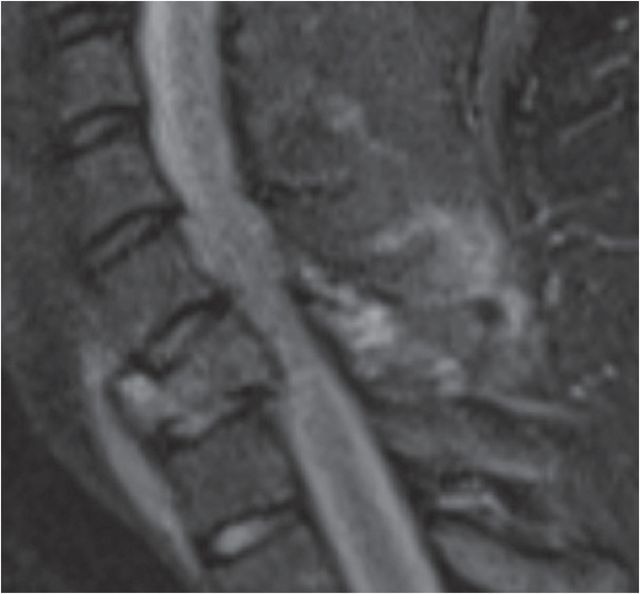
Diagnosis: Flexion teardrop fracture at C7
Sagittal and axial CT images (left and middle images) demonstrate a small anterior teardrop fragment (yellow arrow) and retropulsion of the C7 vertebral body into the spinal canal. There is also posterior column injury, depicted by widening of the interspinous distance (red arrows) and displaced fracture of the lamina (blue arrow). The prevertebral soft tissues are thickened.
Sagittal STIR MRI (right image) demonstrates compression of the spinal cord at C7 with disruption of the ligamentum flavum (green arrow), and interspinous ligaments (white arrow). History of traumatic hyperflexion along with these findings supports the diagnosis of flexion teardrop fracture.
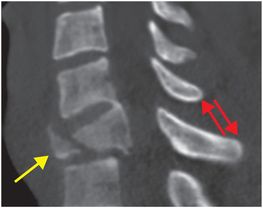
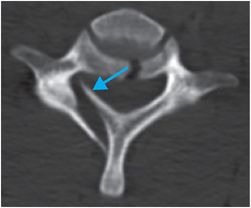
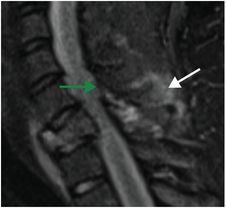
Discussion
Approximately 3–4% of trauma patients suffer cervical spine injury, with spinal cord injury in approximately 12,000 patients per year in the US.
Traumatic cervical cord injury is fatal in about half of cases.
Classification systems for cervical spinal cord injuries take into account the complex anatomy of the vertebrae and ligamentous stabilizers.
The Subaxial Cervical Spine Injury Classification (SLIC) system is based on fracture morphology, status of the discoligamentous complex, and neurological status. The SLIC is similar to, but slightly different from, the Thoracolumbar Injury Classification and Severity Score (TLICS) scoring system discussed in Case 67 (e.g., a distraction morphology is 3 points for SLIC and 4 points for TLICS). Operative management is recommended for patients with SLIC scores of five or greater.
| Fracture morphology | Score |
|---|---|
| None | 0 |
| Compression | 1 |
| Burst | 2 |
| Distraction | 3 |
| Rotation/Translation | 4 |
| Disco-Ligamentous Complex | |
| None | 0 |
| Indeterminate | 2 |
| Disrupted | 3 |
| Neurologic Function | |
| Intact | 0 |
| Root injury | 1 |
| Complete cord injury | 2 |
| Incomplete cord injury | 3 |
| Ongoing compression with deficits | +1 |
| Total * |
* Total score ≤ 3, nonoperative treatment is recommended; score = 4, either surgery or nonoperative treatment is indicated; and scores ≥ 5, surgery is recommended.
Stay updated, free articles. Join our Telegram channel

Full access? Get Clinical Tree





